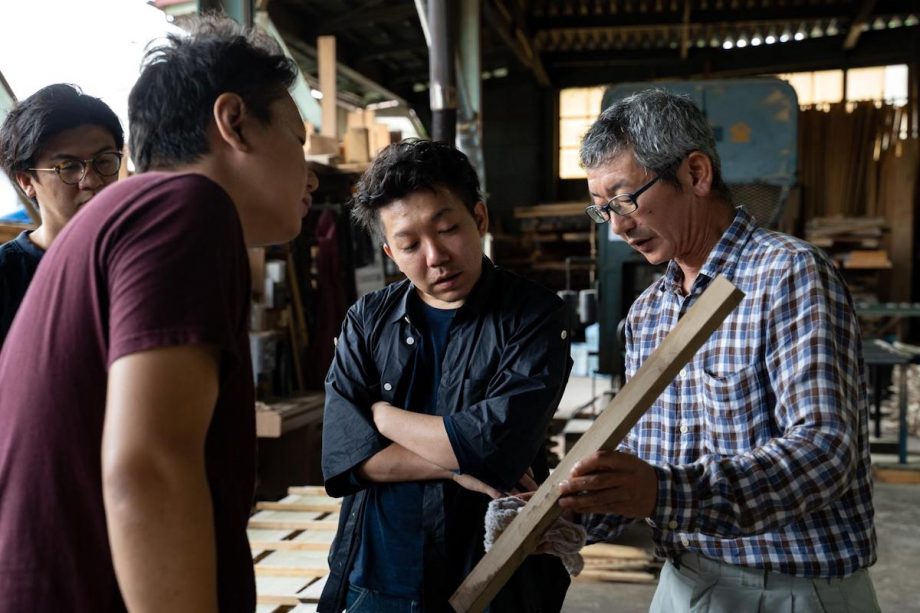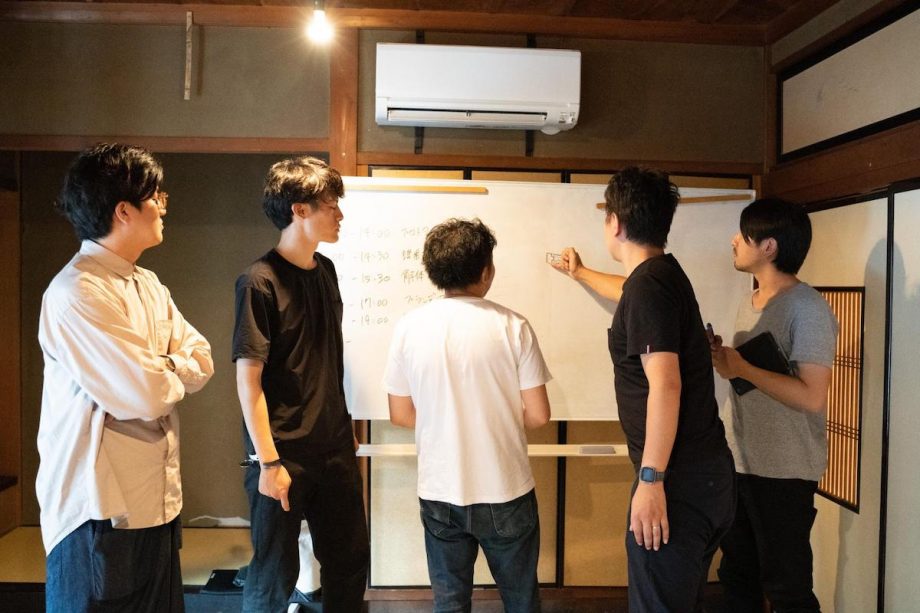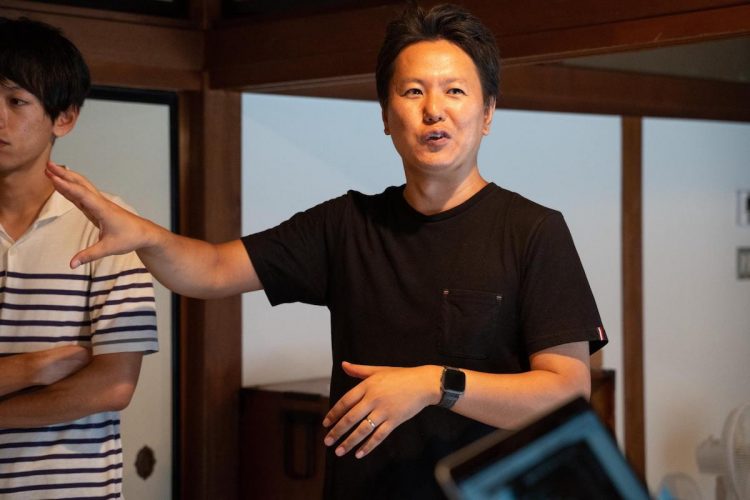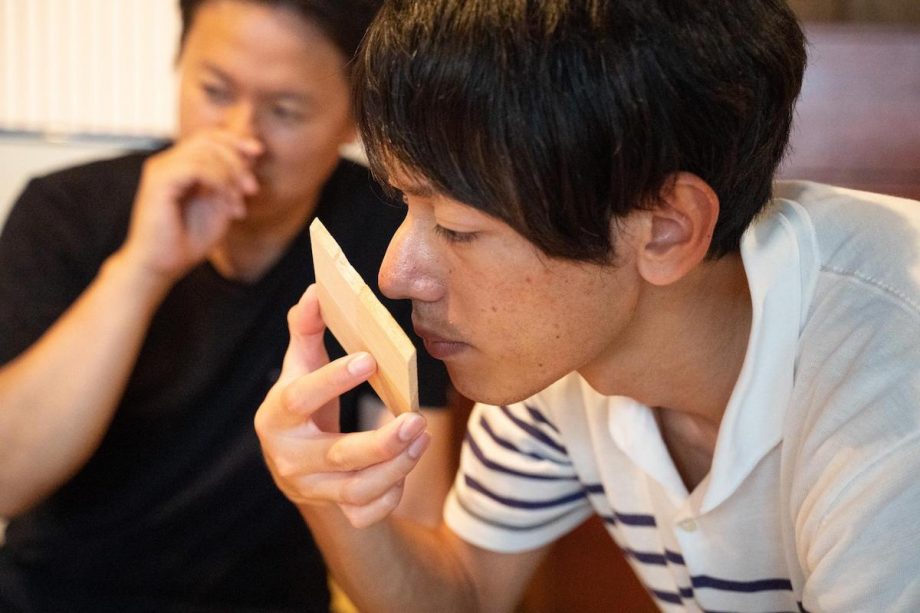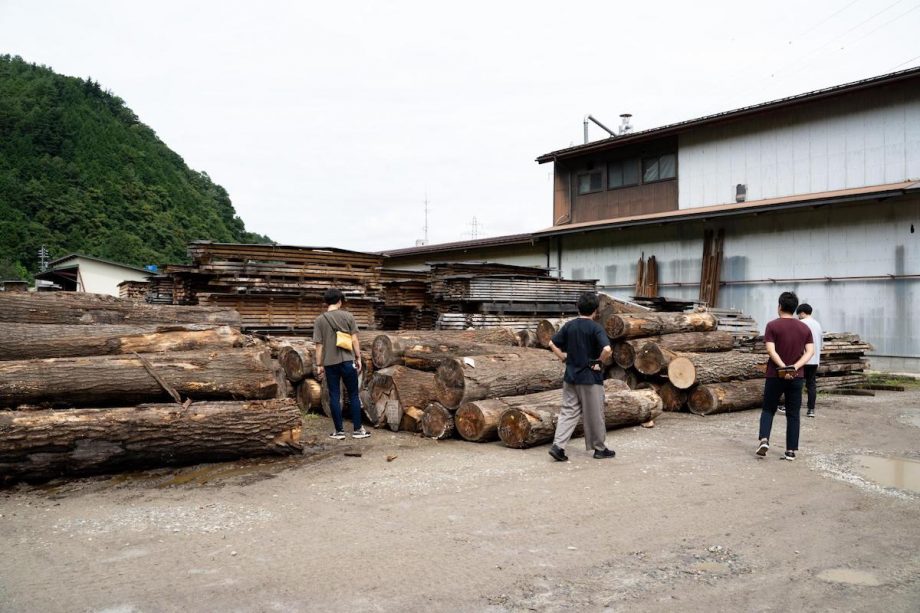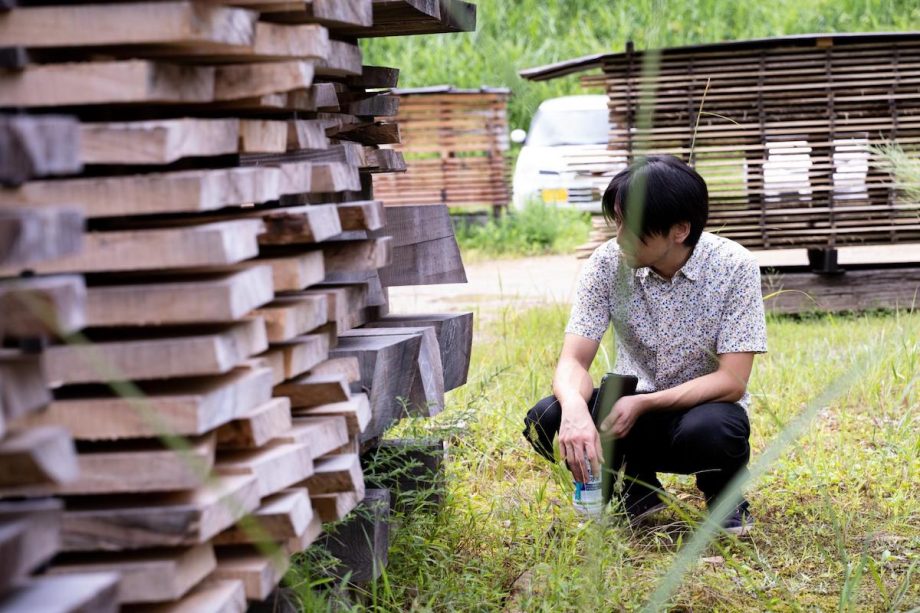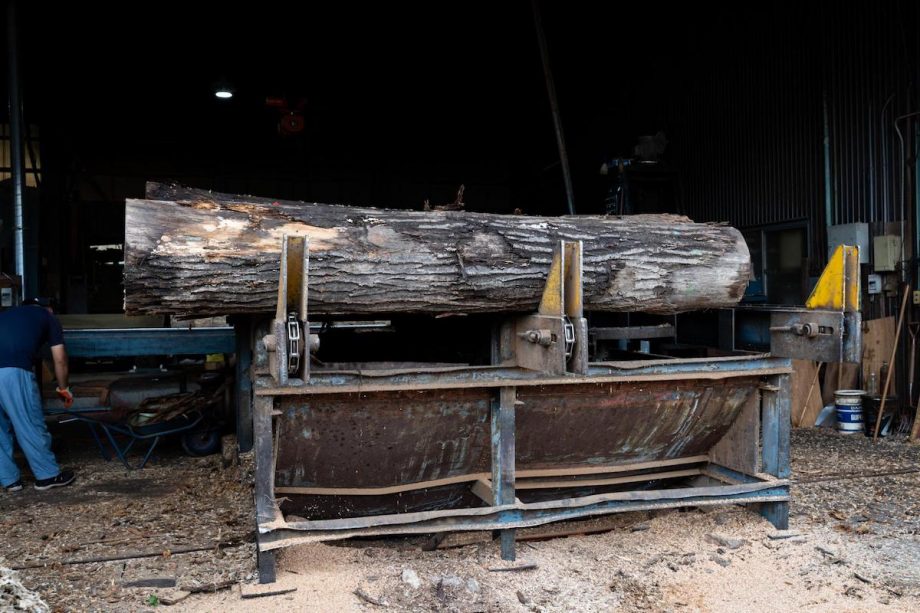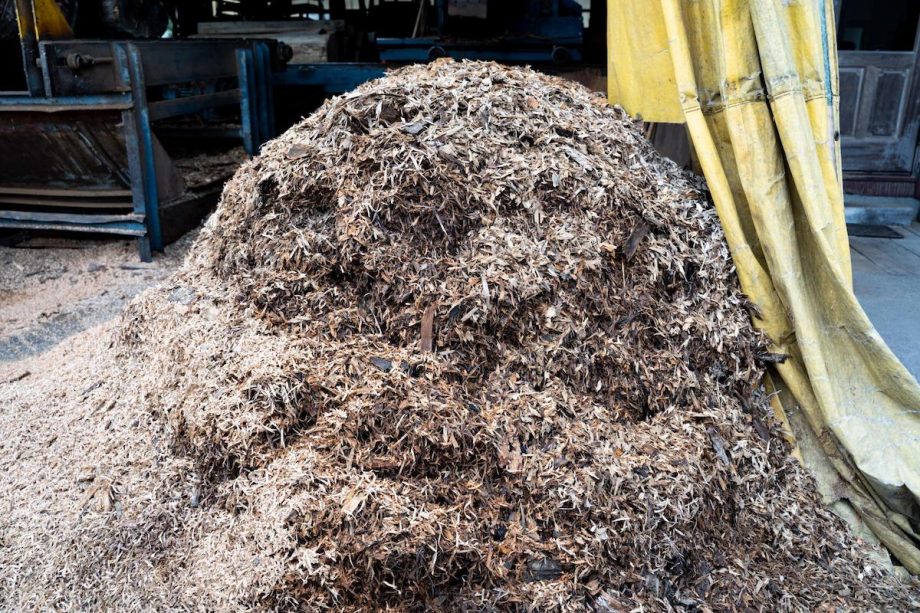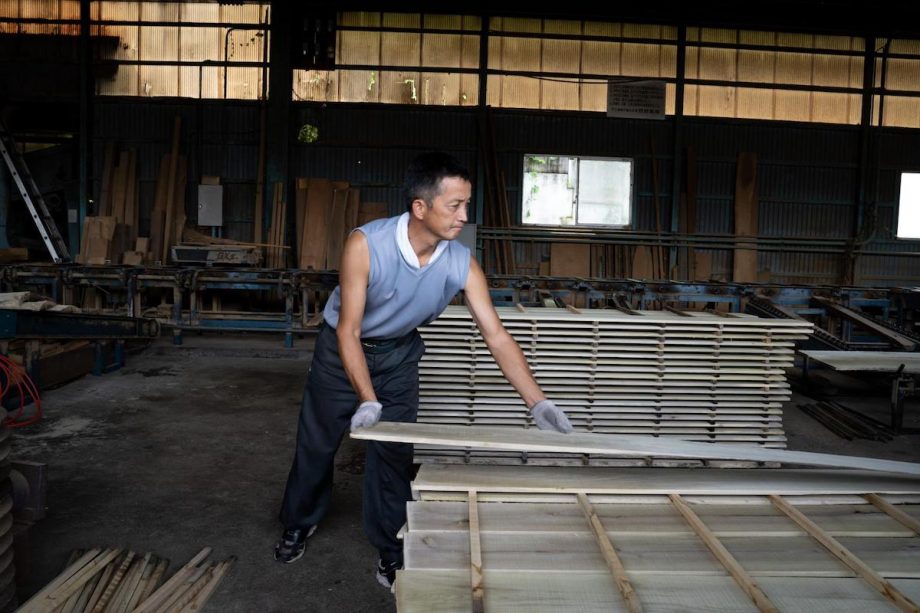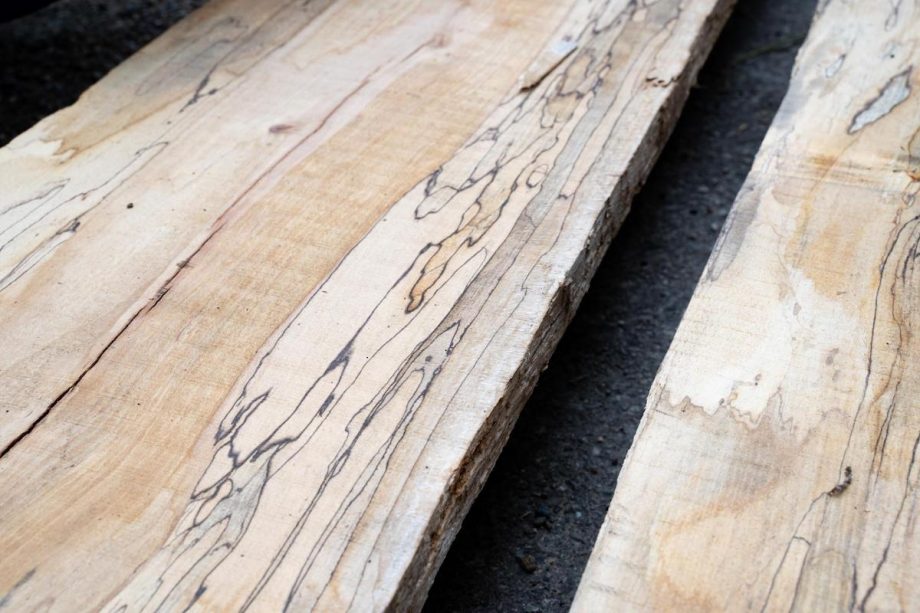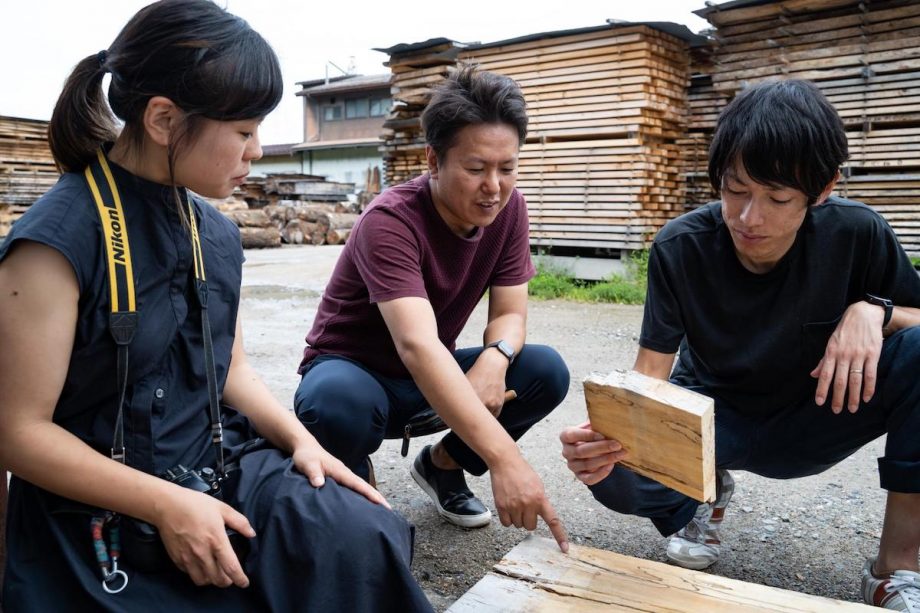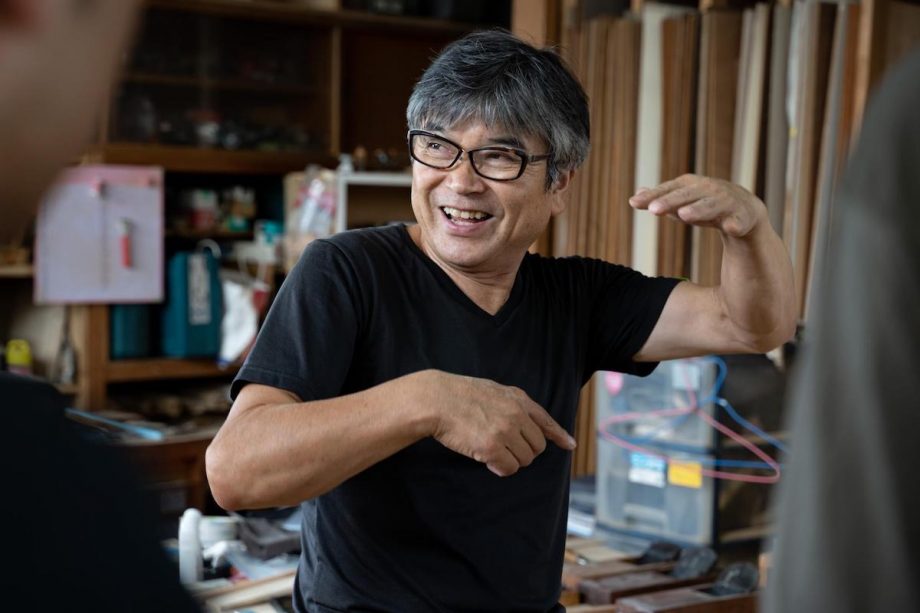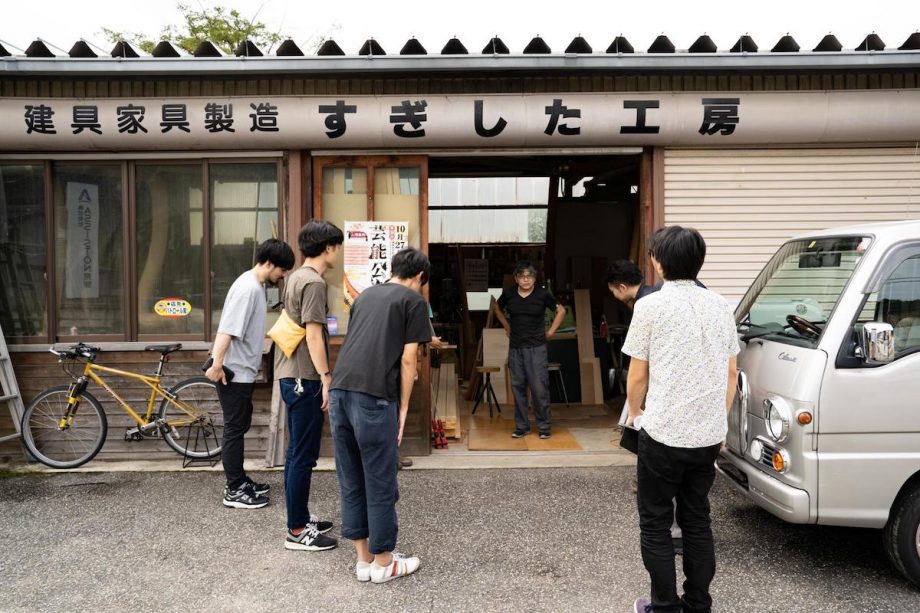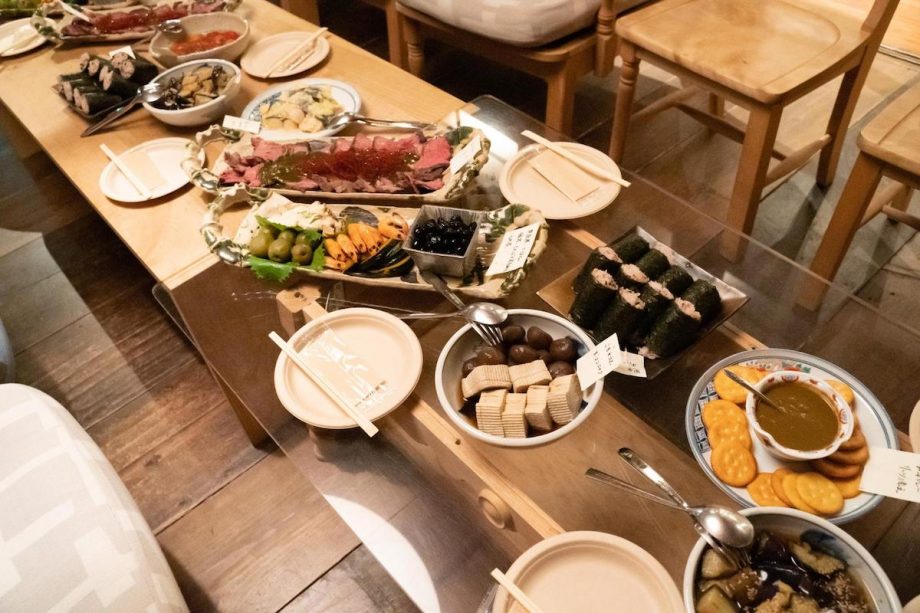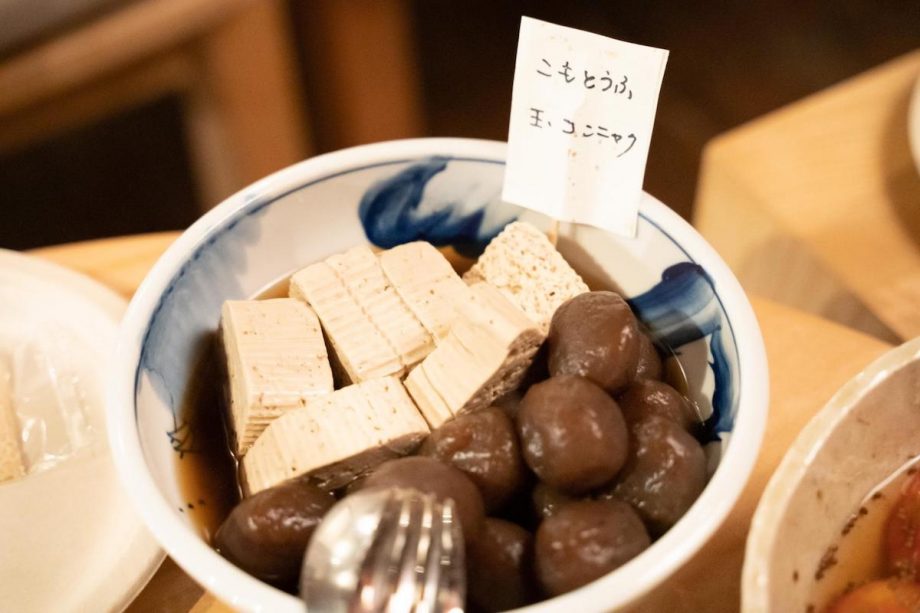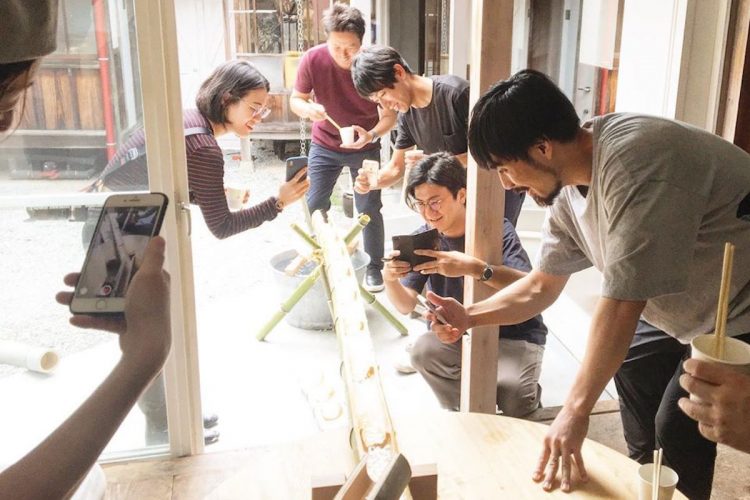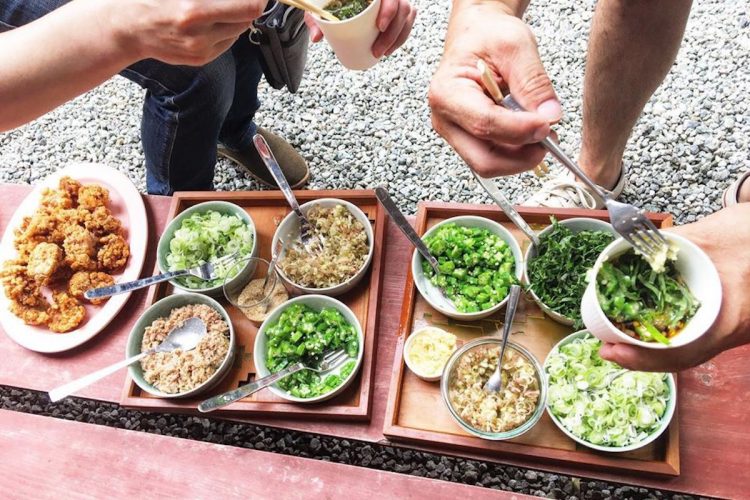Event report
July 7, 2020
FabCafe Global Editorial Team
This article was originally posted on “Hidakuma Inc.” which runs FabCafe Hida
Outline
A two-day designing camp – create, and share the concentrated time and space
In September 2019, Hidakuma held a two-day training camp during which we concentrated on prototype building of joinery to combine wood and different materials here at FabCafe Hida. This training camp was conducted as a part of research on interaction between humans and objects, which is being conducted at the Human Information Science Laboratory, LIXIL Technology Research Headquarters, a major housing equipment company. The goal of this camp was to “re-examine the relationship between people, materials, and wood,” with the wood as the cut.

LIXIL researchers, Yuda and Kobayashi, join the event as core participants, along with Ueda, a metal artist from Takaoka of Toyama, Numa, an architect, and Loftwork Co., Ltd./MTRL producer Ohara (Benkei) from Tokyo, creative directors Matsumoto, and Kaneko. From Hidakuma, Kuroda and Iiyama, who are in charge of design and production, also join the team.
-

-
At the training camp, we set “wood” as the theme material, and examined the combination, the impression various combinations generate, and their value.
While picking up and appreciating the materials, we discussed the selection of materials and combinations, and made a fitting as a prototype. In addition, in order to learn about hardwood, one of the materials, we visited a sawmill and a craftsman’s workshop that are our production partners, to deepen our understanding of the process of making wood into a material as well as the detailed information necessary for commercialization. In this process, we re-examined the relationship between people and trees, and explored undiscovered potentials.
Imagine what it was like to join a camp where you could share your time and put together your ideas into a form in two days? In this article, we will introduce some part of the program held on the day, and the testimonials of the participants.
(Please note that, due to its restricted privacy, the details of the project and the finished prototype are not posted.)
*This project is being implemented as part of a project underway at LIXIL Corporation and Loftwork Corporation.
Case Study: “Making an Idea Into a Shape In 3 Days” (Loftwork Co., Ltd.)
Project Summary
- Support details
Prototype production
Project organization and proposal offering
Directing furniture manufacturing
Wood material selections and procurement
Process management
Offering FabCafe Hida as a project hub and accommodation. Also the use of the space at the cafe.
- Durating
September 2019
- Team
Client: LIXIL Corporation
Production/Product management/Creative Directing: Kazuya Ohara, Ryo Matsumoto, and Yui Kaneko
Furniture design: Toshiyuki Numa (dot studio)
Casting metal production: Tsuyoshi Ueda
Furniture design/Furniture manufacturing directing: Akiyo Iiyama and Kousuke Kuroda (Hidakuma Inc.)
Furniture manufacturing: Sugishita Kobo (Workshop)
Cooperation: Nishino Lumber Mill
FabCafe Hida Quickly Turning Into a Intense Project Room

In this training camp, we made four types of prototypes of joinery using wood and different materials. Discussions and processing adjustments being carried out on-site, the project ideas were shared and approved simultaneously, and made a prompt advancement. The FabCafe Hida became a room full of intensity.
The Toyama team and the Hidakuma team had been working on one of four types prior to the start-up of the camp. On the first day of the camp, the parts that had been prepared and processed were joined together. We completed and evaluated the first prototype.
The next was to create a rough draft of the remaining prototypes. We examined tree species that would be suitable.
-

Picking up tree samples
-

The scent from the tree still remains even in processed pieces.
On Day 2, we had a discussion on how we forgo for the rest of the prototypes, followed by making drawings and selecting the tree species to use.
-

-

Hardwood samples.
Making Tree Into Usable Pieces
In the morning of Day 2, Hidakuma organized a tour to offer an opportunity to expand the knowledge on Hida local trees. The place Hidakuma staff took them to was Nishino Lumber Mill. It is one of the leading hardwood sawmills in the prefecture. The owner, Warm-welcoming the team members, Mr. Nishino explained the process of sawing, which usually takes over a year including grinding and drying raw wood, and making it into a processable wood.
-

Mr. Nishino, Sawmill’s owner
-

-

Naturally seasoned tree materials
-

Mr. Ueda sees trees in the way how to cooperate casting metals with them
Coincidentally, magnolia, one of the tree species used for this prototype, was lumbered on the same day. It was a valuable opportunity as the team got to see the actual tree materials, rather than them being in a form of board, as well as the difference in the colors of the tree core and sapwood, which is unique to magnolia.
-

Magnolia being lumbered
-

-

The core of the tree has pale green color
-

Mr. Nishino showed us a special rare sported wood. Sported wood is a tree that has a pattern of black discoloration in a streak pattern, where fungi and the like enter the damaged area woodpeckers or insects created. It was a type of tree that would never be seen on the market, therefore seeing the spotted wood for the first time was a treat for all members.
-

Sported wood with streaky black pattern
-

Thinking of the Design With the Manufacturers On the Site
-

Mr. Sugishita, Furniture Maker
-

-

-
Next, the team visited Mr. Sugishita’s workshop where he works on producing the prototype.
Sugishita offered us advice on the details that need adjusting on design because of the properties for each tree such as distortion, twist, and warpage.
Refreshing Break Time
Work underwent in a short period of time. The team took some break at lunch and dinner time throughout the day.
On Day 1, the medicinal herbs dinner was catered from a long-established restaurant/Ryokan hotel, Busui-tei. The place was founded in 1868 and was associated with a well known historical novelist Shotaro Ikenami. The members all enjoyed mineral-filling meals after hard work.
-

Dishes from Busuitei restaurant
-

On Day 2 FabCafe Hida happened to be its regular closing day. With the suggestion as “Let’s do somen noodles at the cafe!” from Mr. Katada, a local furniture craftsman, who is a working associate, all the project members and Hidakuma staff enjoyed somen lunch together.
The Impact the 2-Day Camp Has on Us – A Sense of Accomplishment and Enjoyment

“I remember that I felt every member enjoyed more than anything, and I also enjoyed myself so much that I forgot that it was actually a work,” says Kobayashi of LIXIL. After the camp, the members would complete the remaining of the prototype projects in the next month. The fact that the production of these prototypes proceeded smoothly and there was no rework is the result of the great communication between the members at the concentrated Hida training camp.
-
Shuhei Kobayashi
LIXIL Inc., Ltd,
Technology and Research Headquarter,
Human Science Research InstituteBorn in Kyoto in 1987. Kobayashi completed the graduate school of Ritsumeikan University, then joined LIXIL Corporation in 2011. Engages in research aiming to improve the customer’s value of housing equipment and building materials through the interaction between people and things.
Born in Kyoto in 1987. Kobayashi completed the graduate school of Ritsumeikan University, then joined LIXIL Corporation in 2011. Engages in research aiming to improve the customer’s value of housing equipment and building materials through the interaction between people and things.
-
Kazuya Ohara
Loftwork Inc.,FabCafe MTRL Producer
Ohara joined Loftwork in 2015. Involved in the operation as a startup member of the platform “MTRL” aiming to upgrade the new value of materials. Currently, as a producer, he is involved in planning materials, materials-based companies, projects, and creating new businesses. The motto is “life is a mismatch”. He is a co-author of the book “Meeting for ‘Can Fashion Be Updated?’ dreaming of processing innovation of people, clothes and society” (Film Art, 2015). He is known by the nickname “Benkei”.
Ohara joined Loftwork in 2015. Involved in the operation as a startup member of the platform “MTRL” aiming to upgrade the new value of materials. Currently, as a producer, he is involved in planning materials, materials-based companies, projects, and creating new businesses. The motto is “life is a mismatch”. He is a co-author of the book “Meeting for ‘Can Fashion Be Updated?’ dreaming of processing innovation of people, clothes and society” (Film Art, 2015). He is known by the nickname “Benkei”.
-
Ryo Matsumoto
Loftwork Inc.,
Creative DirectorGraduated from the Department of Information Design, Faculty of Arts at Kyoto University of Art and Design. During his college days, he actively worked as a designer and received the UNIQLO CREATIVE AWARD and Kashiwa Sato Award in 2007. After school, he worked at a design office and moved on to become a freelancer. He participated in the advertising production of Kyoto Fukujuen, and the public relations strategy team of the “Let’s Dance” signature promotion committee, which collected 100,000 signatures.
Matsumoto joined Loftwork in 2017. His goal is to aim not only to design in an authentic way, but to engage deeply in creative projects from the upstream of the project.Graduated from the Department of Information Design, Faculty of Arts at Kyoto University of Art and Design. During his college days, he actively worked as a designer and received the UNIQLO CREATIVE AWARD and Kashiwa Sato Award in 2007. After school, he worked at a design office and moved on to become a freelancer. He participated in the advertising production of Kyoto Fukujuen, and the public relations strategy team of the “Let’s Dance” signature promotion committee, which collected 100,000 signatures.
Matsumoto joined Loftwork in 2017. His goal is to aim not only to design in an authentic way, but to engage deeply in creative projects from the upstream of the project. -
Yui Kaneko
Loftwork Inc.,
Creative DrectorAfter graduating from Nihon University College of Art, studying at the Department of Photography, Kaneko worked as a studio photographer in Tokyo and then became a freelance photographer. Seeing her own work out in the public as part of advertisements and magazines, she realized the importance of co-relations between photography and design. That led her to study graphic design. Through her own experiences, at Loftwork, she as a director aims to take perspectives of both clients and creators into account, and to manage the right command in the right place. Still takes an active role as a photographer, still photographer, and designer. Her hobbies include listening to stories of “dreams” that people see in their sleep, and watching ballet.
After graduating from Nihon University College of Art, studying at the Department of Photography, Kaneko worked as a studio photographer in Tokyo and then became a freelance photographer. Seeing her own work out in the public as part of advertisements and magazines, she realized the importance of co-relations between photography and design. That led her to study graphic design. Through her own experiences, at Loftwork, she as a director aims to take perspectives of both clients and creators into account, and to manage the right command in the right place. Still takes an active role as a photographer, still photographer, and designer. Her hobbies include listening to stories of “dreams” that people see in their sleep, and watching ballet.
-
Tsuyoshi Ueda
Metal Artist
Born in Nara Prefecture in 1986. Graduated from Kanazawa College of Art, Department of Crafts in 2010. Completed graduate school of the Arts and Crafts at Tokyo University of the Arts in 2012. Part-time lecturer at Kanazawa College of Art since 2019.
Born in Nara Prefecture in 1986. Graduated from Kanazawa College of Art, Department of Crafts in 2010. Completed graduate school of the Arts and Crafts at Tokyo University of the Arts in 2012. Part-time lecturer at Kanazawa College of Art since 2019.
-
Toshiyuki Numa
dot studio representative
1st Class Registered ArchitectBorn in Toyama in 1982. Completed the graduate school of Hosei University in 2007. Between 2007-2012, Numa worked at ADH, a design organization. A representative from dot studio since 2012. Major awards include the 2005 Hosei University Graduation Design Award, and Judges’ Special Award at the JIA Tokyo Graduation Design Competition. In 2012, he received the Japan Architects Association Award, the Architectural Institute of Japan Award, and the Good Design Award on the “Makabe Denshokan”, which was one of the projects worked with ADH design organization. Also received the Toyama Prefecture Architecture Award in 2017.
Born in Toyama in 1982. Completed the graduate school of Hosei University in 2007. Between 2007-2012, Numa worked at ADH, a design organization. A representative from dot studio since 2012. Major awards include the 2005 Hosei University Graduation Design Award, and Judges’ Special Award at the JIA Tokyo Graduation Design Competition. In 2012, he received the Japan Architects Association Award, the Architectural Institute of Japan Award, and the Good Design Award on the “Makabe Denshokan”, which was one of the projects worked with ADH design organization. Also received the Toyama Prefecture Architecture Award in 2017.
-
Kousuke Kuroda
Wood Creative Director at Hidakuma Inc.,
Born in Osaka. While studying architecture and woodwork at university, Kuroda got interested in the phenomenon of light, which inspired him to go to Finland to study the design of furniture and lighting.Then, joined Hidakuma in 2019, who treats the material of wood beyond furniture, and is heavily involved in the forest matters. Kuroda’s aim is to create new things and values by adjusting or connecting the balance among matters such as people and materials, digital and analog. He values every daily life, and enjoys walking and looking for good music.
Born in Osaka. While studying architecture and woodwork at university, Kuroda got interested in the phenomenon of light, which inspired him to go to Finland to study the design of furniture and lighting.Then, joined Hidakuma in 2019, who treats the material of wood beyond furniture, and is heavily involved in the forest matters. Kuroda’s aim is to create new things and values by adjusting or connecting the balance among matters such as people and materials, digital and analog. He values every daily life, and enjoys walking and looking for good music.
Even though the camp was as short as 2 days, the work on the prototype specifications on the spot while discussing with Hidakuma/designers was very lively, and refreshing. More than anything else, I remember feeling that every member was having fun, and I enjoyed myself so much that I forgot that it was actually a job along the way. There was a banquet on the night of the first day, in which the local sake was served and we all had a great time. Yet, everyone was at work on time on the following day, which was impressive.
There were many new discoveries through this camp, such as a new aspect of the tree that I was not familiar with. For example, there is a tree species with a color that can be seen only immediately after sawing. I learned that there are still many aspects that I don’t know about trees. I will continue to create new customer value by taking advantage of the characteristics of wood as a material. Those two days made me even more fond of trees.Shuhei Kobayashi
LIXIL Corp., Ltd.
Headquarter of Technology Research
Human Information Science Laboratory
With the slogan of “creating new materials/building materials,” this project is steadily making good progress. What I am most consciously aware of in the project is to “think while creating”, instead of drawing and writing just in your head. ” R&D progresses in the process of making ideas and sketches into “things”, and then verified, and recreating what has been verified.
As a motto to “make it first”, we spent our time here jumping out in the field, interacting with the materials, and being with the members day and night. That was extremely meaningful, which helped us speed up completing the project.Kazuya Ohara
Loftwork Inc.,
FabCafe MTRL Producer
How could we connect on-going metal materials research with trees? That was our first question. We actually touch things and have discussions and drop them in the plan. Through the process, I was fascinated with the theme and both wood and metal materials, besides the finished product.
Probably everyone in the team was fascinated by the whole project in a similar way. And by spending the same time making the same thing, we have managed to become a “team” in an unimaginable short period of time, even though we are people with different expertise from different backgrounds.Ryo Matsumoto
Loftwork Inc.,
Creative Director
Through this project, I started to pay more attention and develop personal attachment to the wood materials – saying to myself “what kind of tree is this?”, “why did they choose this type of tree?”, instead of just looking at a “wooden chair”. Through taking time and sharing opinions with experts on the compatibility of wood and metal materials, I believe I have deepened my understanding on wooden materials.
Also I think that the quality of the project has improved because we had the meeting at the place where we can actually smell and feel the weight and texture of the wooden materials. This would not be possible by looking them up on the Internet.Yui Kaneko
Loftwork Inc.,
Creative Drector
In this project, I participated as a creator who processes the material in order to explore new aspects of the material called metal. Through the camp, I think that I was able to share a concentrated time and space with everyone in the project team and propose a metal expression that also included my personal feelings for the material.
How do you accept the fate of a metal material that is inevitable to rust? Rust on metal is a pre-conceptual idea to everyone’s mind, but could we possibly erase it, and how? We tried to convey the charm of the material that only creators get to see to users through the product.Tsuyoshi Ueda
Metal Artist
The work of absorbing the knowledge that the Hidakuma team has towards trees, and the knowledge of metalworker Tsuyoshi Ueda towards the metal at the same time – that process was far from the feeling I get when I select the tree species based on the strength of the wood grain, the color tone, and the grain of the grain. But it was rather close to the feeling that I chop off some part of the growth off a tree developed in the long time axis of nature. This experience has broadened the horizon of how I deal with my own manufacturing. The whole experience at the camp made me want to visit to try out this process as well as to enjoy Hida evenings on a regular basis.
Toshiyuki Numa
dot studio representative
1st Class Registered Architect
In wood manufacturing, the handling of trees is called “woodworking (kizukai)”.
I think that this word is similar to the word used for people, “caring (kizukai)”, which I cherish. This project truly represents the time of “facing trees with care”.
I think that wood is an interesting material that changes its expression over time. For example, the changing factor may be the influence from the environment of light, or how the trees are related to the user.
The change is more like becoming “familiar” than deterioration. Through this camp, I think that we were able to exchange opinions on how to control and use each material with different expressions on this axis of “time”.Kousuke Kuroda
Wood Creative Director at Hidakuma Inc.,
Would You Like to Design Camp for Research and Development in Hida?
Hida is a town where you can enjoy the exposure to abundant hardwood forests and meeting wood professionals involved in production. At Hidakuma, we support experimental prototype production, material development, and research, while closely working with you based on your requests.
For enquiries see here.
-
FabCafe Global Editorial Team
This articles is edited by FabCafe Global.
Please feel free to share your thoughts and opinions on this article with us.
→ Contact usThis articles is edited by FabCafe Global.
Please feel free to share your thoughts and opinions on this article with us.
→ Contact us

